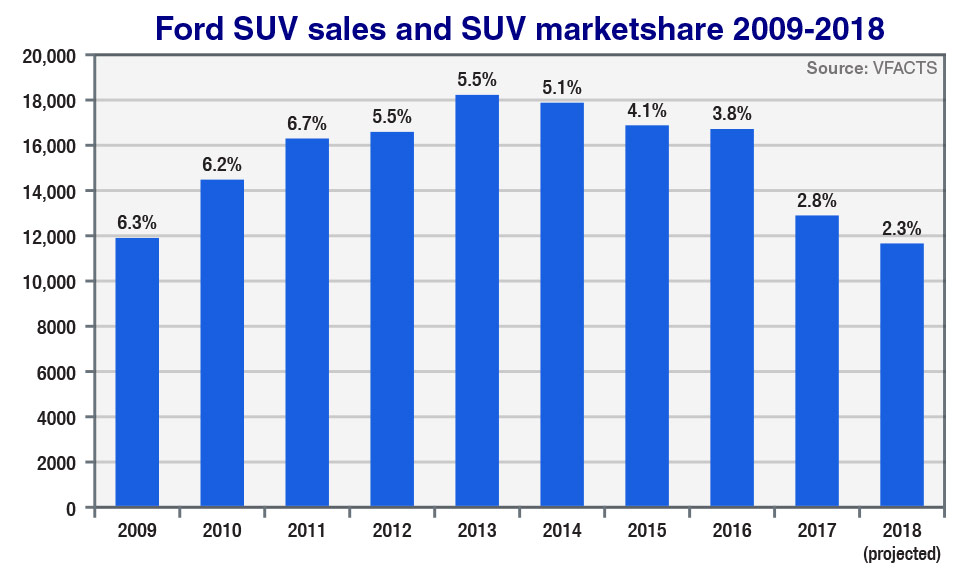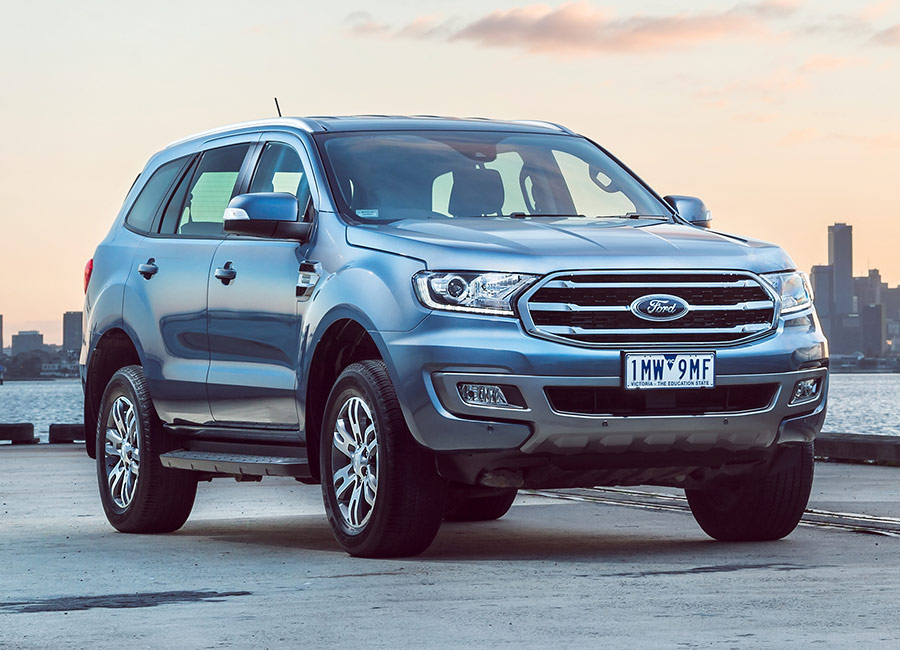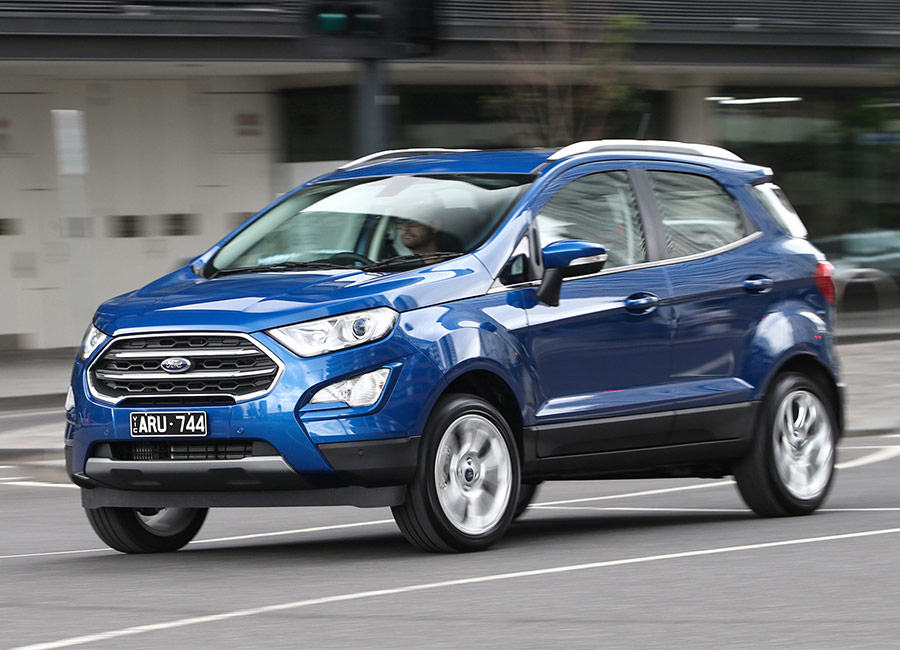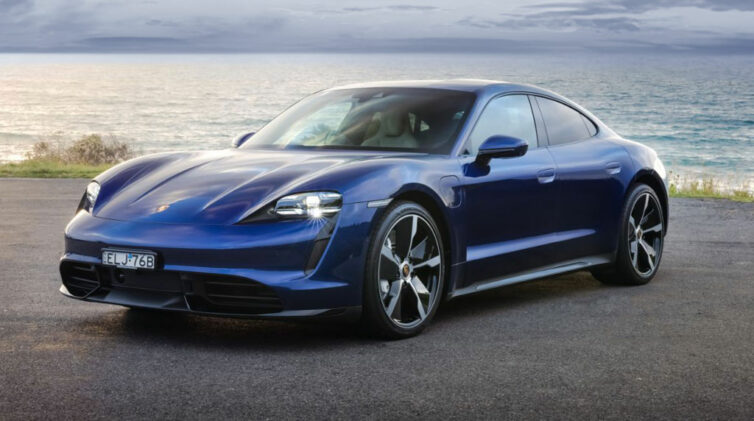So far in 2018, the Blue Oval brand holds a 2.3 per cent share in the overall SUV market, which places it 12th in the industry behind strong performers such as Toyota (16.5 per cent), Mazda (10.7 per cent) and Mitsubishi (10.1 per cent), and even trailing brands like Mercedes-Benz (3.0 per cent) and Volkswagen (2.8 per cent).
Speaking to GoAuto at the launch of the updated Everest large SUV last week, Ford Australia’s recently appointed president and CEO Kay Hart said listening to customer feedback was key to sales success.
When asked what was needed to improve SUV sales, Ms Hart said: “I think by continuing to bring product in that customers love and want, continuing to listen to customers and the Everest is a fantastic example of that.
“So since we’ve launched and the enhancements you would have seen in this vehicle are really focused on giving customers what they’ve been asking for, so I would say a continued focus on that and continued focus on the breadth of line-up as well, which have now from small to Everest.
“There’s an obvious growth of SUVs in the Australian market … so I think that that growth in terms of the market, it’s making sure you keep up with that, and you give customers what they’re looking for.”
Ford Australia’s SUV sales have taken a significant hit over the past two years, falling from 16,793 units in 2016 – the final year of production for the locally built Territory – to 12,982 in 2017, the company’s first full year as a full-line importer.
It has managed 6799 sales to the end of July this year, marking a 17.0 per cent drop on the same period last year. It now looks set to finish the year with around 11,500 total SUV sales.
Over the past 10 years, Ford’s best sales period occurred in 2013 when it recorded 18,304 SUV sales, enough for a 5.5 per cent market share.

Smooth sailing: Ford Australia says it will keep focusing on customer feedback for its current SUV line-up, which has struggled to take advantage of Australia’s SUV appetite.
SUV market share has declined every year for the Blue Oval brand since 2011 when it held a 6.7 per cent share with three product offerings, steadily falling to 5.1 per cent in 2014, to 3.8 per cent in 2016 and 2.8 per cent last year.
This has occurred while SUVs as a proportion of the new-vehicle market’s overall sales has climbed steadily from 31.7 per cent in 2014 to 35.4 per cent in 2015, 37.4 per cent in 2016 and 39.2 per cent last year, when it finished ahead of passenger cars for the first time.
The juggernaut has rolled on into this year, with SUVs accounting for 42.7 per cent of all sales in the marketplace, compared to passenger cars on 33.7.
Territory’s discontinuation is clearly a big part of the equation, although its dominance had eroded over the years, finishing with 6928 registrations in 2016. Its best sales performance came in 2005 – its first full year on sale – with 23,454 registrations, more than Ford’s entire SUV portfolio has managed for any year this decade.
Intense competition in the market overall has also impacted Ford’s SUV share, particularly in high-growth segments such as small SUVs.
For example, in 2011 the sub-$40,000 small SUV segment contributed 36,841 sales across nine offerings, which ballooned to 104,730 sales across 29 models last year.
Similar increases are seen in the medium SUV segment. While the number of offerings from 2011 to 2017 has remained steady at around 20, volumes have doubled from 82,358 to 164,835
Ford’s current SUV line-up consists of the small EcoSport, medium Escape and large Everest, with the more on-road-oriented Endura set to be positioned alongside Everest before the end of the year.
Ms Hart said that once the Endura arrives, Ford Australia’s SUV portfolio will be complete, with no apparent gaps in the range.
Of its three current offerings, the Everest is the strongest performer this year with 3135 sales, up 21.7 per cent compared to the same point last year. It currently sits third in ute-based SUV sales behind the perennially strong Isuzu MU-X (5113) and Mitsubishi Pajero Sport (3827).
Ford attributed the climb in Everest sales to it gaining momentum after launching in late 2015, as well as introducing new five-seat and rear-drive versions in April 2017.
The Escape mid-sizer has recorded 2982 sales in 2018, up 4.1 per cent, but remains a long distance behind volume-selling rivals like the Mazda CX-5 (16,080), Toyota RAV4 (13,623) and Nissan X-Trail (12,127).
Ford’s slowest-selling current SUV is the EcoSport tallboy hatch, which has managed just 679 registrations, down 22.8 per cent. It has a long way to go to catch up to the best-selling small SUVs like the Mitsubishi ASX (11,053), Mazda CX-3 (10,048) and Subaru XV (8135).
In April, Ford announced it would stop selling passenger cars in North America, however Ms Hart said that Ford Australia would continue to take the brand’s best global products, regardless of their segment.
“We bring product in from all over the world including Europe, so we’ve just announced the all-new Focus for Australia, so we can’t wait to get the product in; (we’re) fully committed to that product here,” she said.
“In Australia we take the best of Ford from around the world and you see that in the line-up here.”
By Robbie Wallis















 Read More: Related articles
Read More: Related articles

